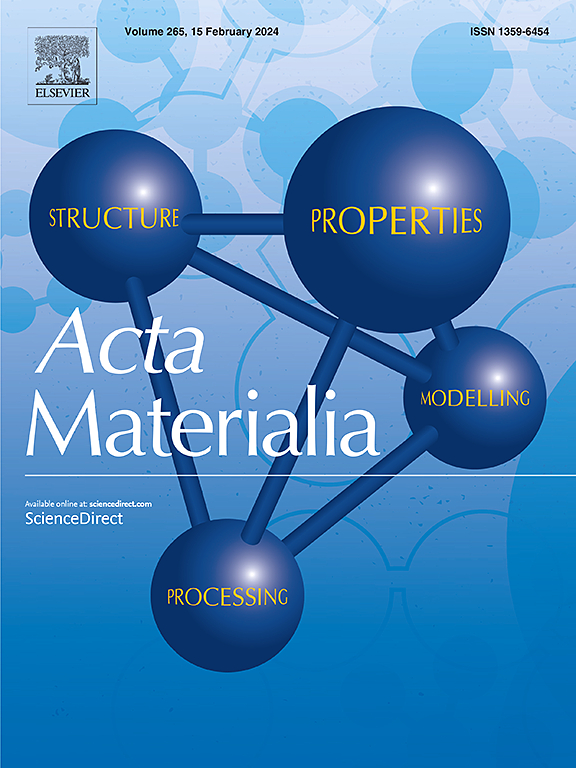Creep-induced microstructures in Zircaloy-4: comparing thermal and irradiation creep
IF 8.3
1区 材料科学
Q1 MATERIALS SCIENCE, MULTIDISCIPLINARY
引用次数: 0
Abstract
Irradiation creep is one of the most critical deformation mechanisms observed in nuclear reactor components, which results in a significant shape change during the service period. In irradiation creep, the magnitude of the shape change is typically significantly higher than under thermal creep under comparable stresses and temperatures. Hence, it is essential to consider the effect of irradiation creep for the safe and economical operation of nuclear reactors. Although numerous works have been conducted to understand the irradiation creep behaviour, many aspects are still not fully understood. The present study explores the irradiation creep behaviour using a multiscale characterization approach by combining high-resolution electron backscatter diffraction and transmission electron microscopy analysis. The microstructure that has evolved during irradiation creep is compared with two thermal creep examples, with our analysis considering the residual elastic strains, GND densities, and dislocation (also irradiation defect) microstructures. It is observed that the irradiation creep is driven by both diffusion- and dislocation-based mechanisms, with a significant diffusion creep component, owing to the radiation-enhanced diffusion rate and the abundant number of point defects produced during irradiation. On pyramidal traces, numerous localized concentrations are observed in GND density and residual strain maps, resulting from the cross-slip of dislocations and the remanent debris accumulated through the process. 3D tomography analysis further reveals the dislocation creep mechanism in Zr alloys, where <a> dislocations emerge as small dislocation loops on pyramidal planes and multiply through cross-slip.

锆合金-4中蠕变诱导的微观结构:热蠕变与辐照蠕变的比较
辐射蠕变是核反应堆构件中最重要的变形机制之一,在服役期间会导致构件形状的显著变化。在相同的应力和温度下,辐照蠕变的形状变化幅度通常明显高于热蠕变。因此,研究辐射蠕变对核反应堆安全经济运行的影响是十分必要的。虽然已经进行了大量的工作来了解辐照蠕变行为,但许多方面仍未完全了解。本研究采用高分辨率电子背散射衍射和透射电镜分析相结合的多尺度表征方法探讨了辐照蠕变行为。将辐照蠕变过程中演变的微观结构与两个热蠕变实例进行了比较,我们的分析考虑了残余弹性应变、GND密度和位错(也包括辐照缺陷)微观结构。结果表明,辐照蠕变由扩散和位错两种机制驱动,其中扩散蠕变成分显著,这主要是由于辐照增强的扩散速率和辐照过程中产生的大量点缺陷。在金字塔轨迹上,在GND密度和残余应变图中观察到许多局部浓度,这是由位错的交叉滑移和通过该过程积累的残余碎屑造成的。三维层析分析进一步揭示了Zr合金中的位错蠕变机制,其中<;位错以锥体平面上的小位错环的形式出现,并通过交叉滑移而成倍增加。
本文章由计算机程序翻译,如有差异,请以英文原文为准。
求助全文
约1分钟内获得全文
求助全文
来源期刊

Acta Materialia
工程技术-材料科学:综合
CiteScore
16.10
自引率
8.50%
发文量
801
审稿时长
53 days
期刊介绍:
Acta Materialia serves as a platform for publishing full-length, original papers and commissioned overviews that contribute to a profound understanding of the correlation between the processing, structure, and properties of inorganic materials. The journal seeks papers with high impact potential or those that significantly propel the field forward. The scope includes the atomic and molecular arrangements, chemical and electronic structures, and microstructure of materials, focusing on their mechanical or functional behavior across all length scales, including nanostructures.
 求助内容:
求助内容: 应助结果提醒方式:
应助结果提醒方式:


